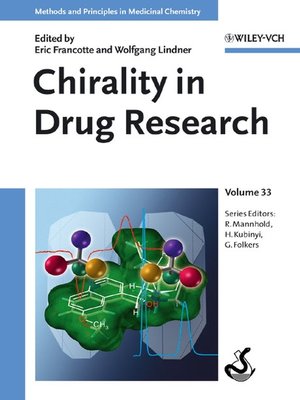Chirality in Drug Research, Volume 33
ebook ∣ Methods and Principles in Medicinal Chemistry
By Eric Francotte

Sign up to save your library
With an OverDrive account, you can save your favorite libraries for at-a-glance information about availability. Find out more about OverDrive accounts.
Find this title in Libby, the library reading app by OverDrive.



Search for a digital library with this title
Title found at these libraries:
| Library Name | Distance |
|---|---|
| Loading... |
Divided into the three main sections of synthesis, analysis and drug development, this handbook covers all stages of the drug development process, including large-scale synthesis and purification of chirally pure pharmaceuticals.
The two editors from academia and a major pharmaceutical company have assembled an experienced, international team who provide first-hand practical advice and report previously unpublished data.
In the first section, the isolation of chiral drugs from natural sources, their production in enzymatic processes and the resolution of racemic mixtures in preparative chromatography are outlined in separate chapters. For the section on qualitative and quantitative analysis, enantioselective chromatographic methods are presented as well as optical methods and CE-MS, while the final section deals with the pharmacology, pharmacokinetics and metabolic aspects of chiral drugs, devoting whole chapters to stereoselective drug binding and modeling chiral drug-receptor interactions.
With its unique industry-relevant aspects, this is a must for medicinal and pharmaceutical chemists.
The two editors from academia and a major pharmaceutical company have assembled an experienced, international team who provide first-hand practical advice and report previously unpublished data.
In the first section, the isolation of chiral drugs from natural sources, their production in enzymatic processes and the resolution of racemic mixtures in preparative chromatography are outlined in separate chapters. For the section on qualitative and quantitative analysis, enantioselective chromatographic methods are presented as well as optical methods and CE-MS, while the final section deals with the pharmacology, pharmacokinetics and metabolic aspects of chiral drugs, devoting whole chapters to stereoselective drug binding and modeling chiral drug-receptor interactions.
With its unique industry-relevant aspects, this is a must for medicinal and pharmaceutical chemists.







